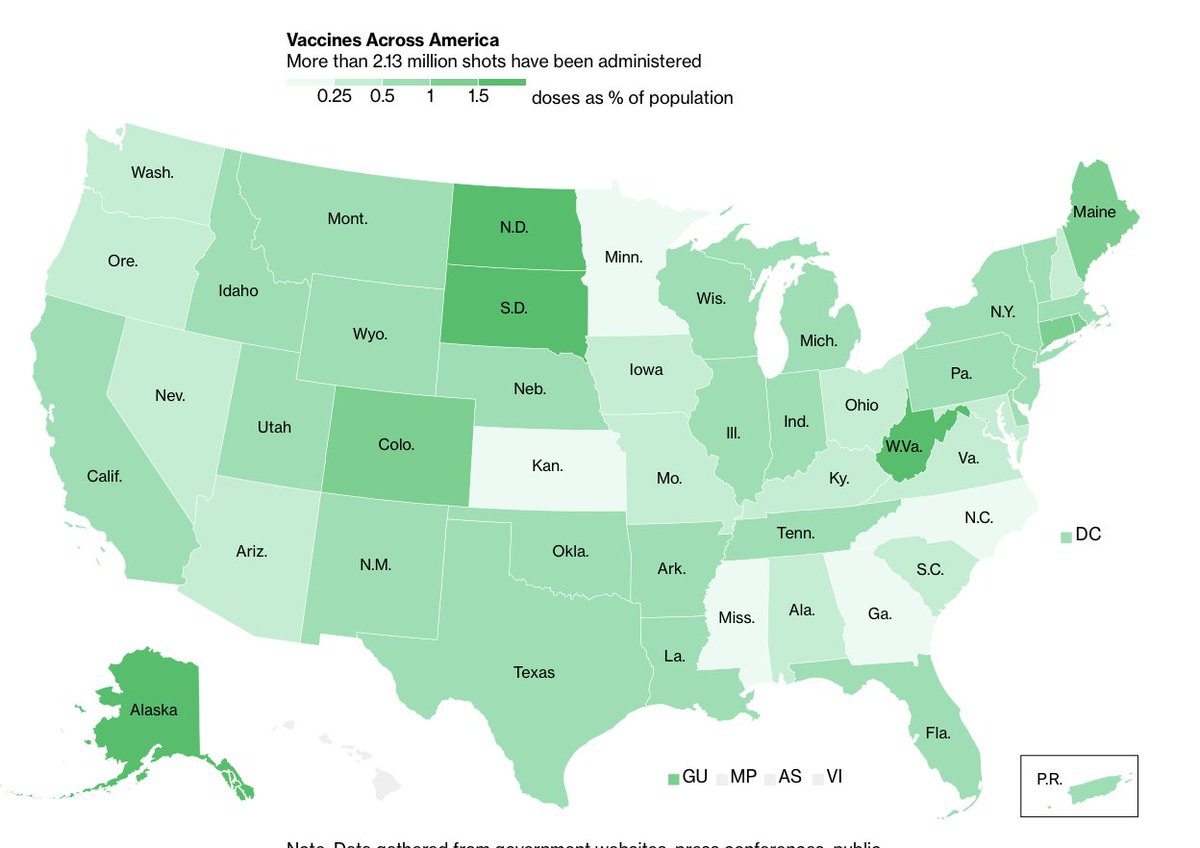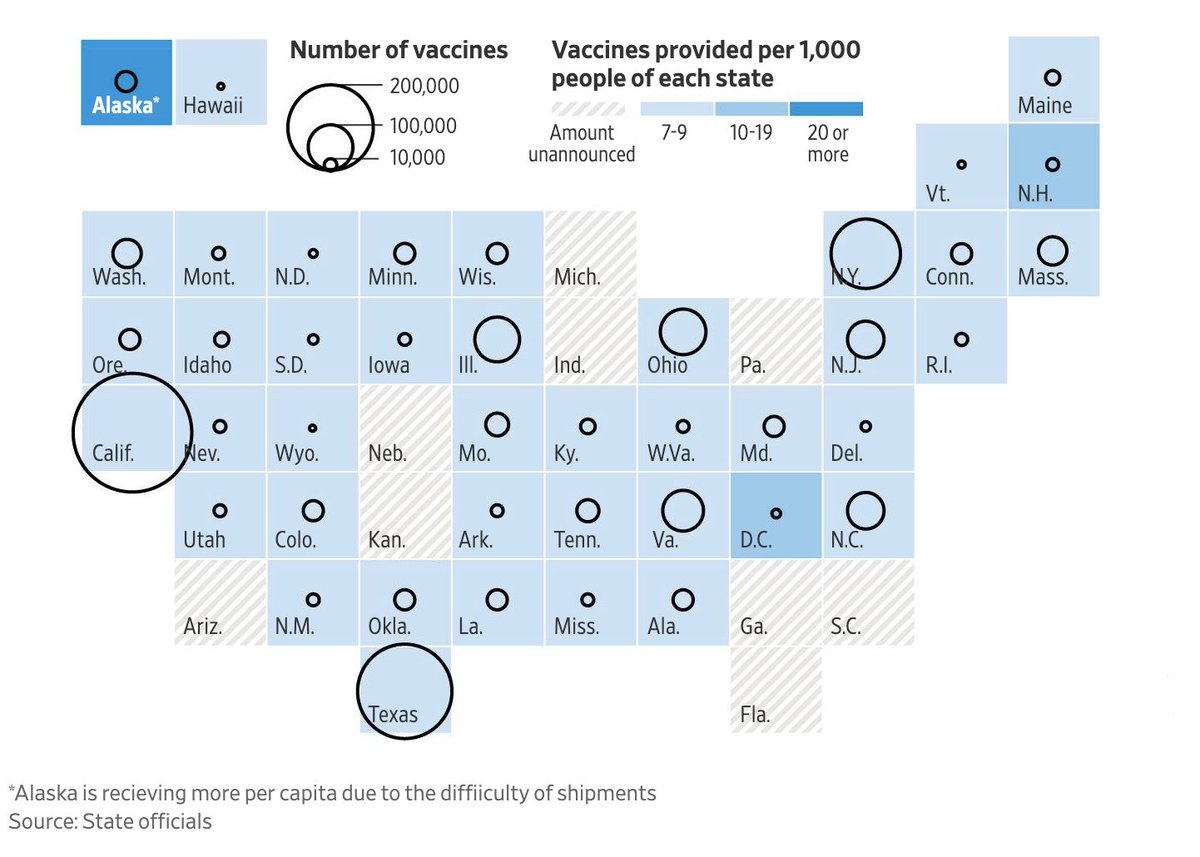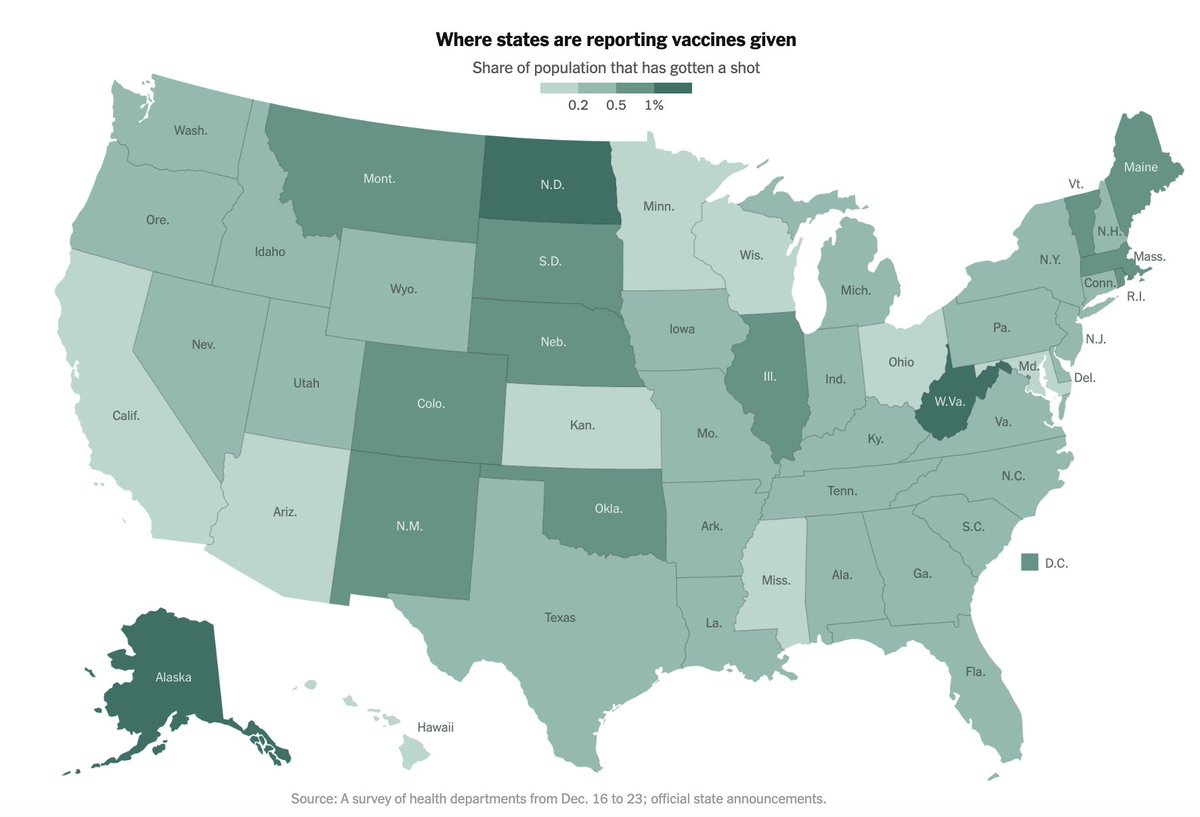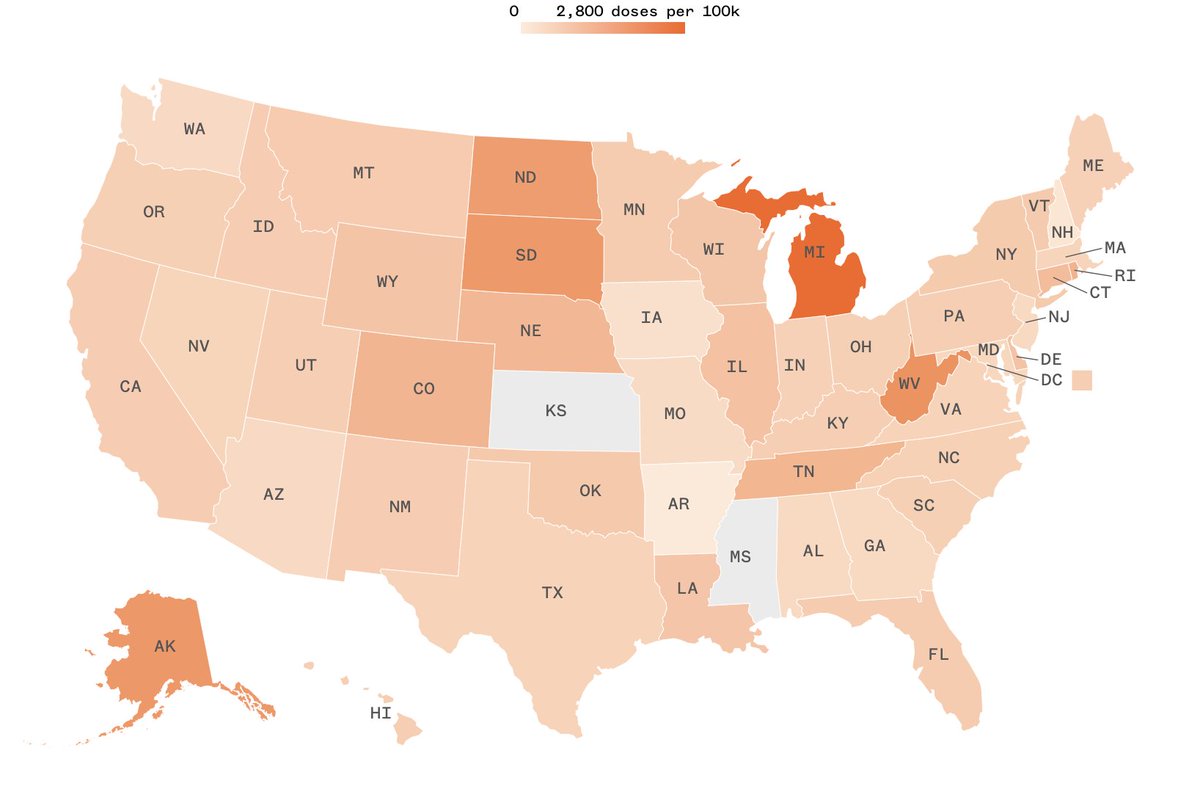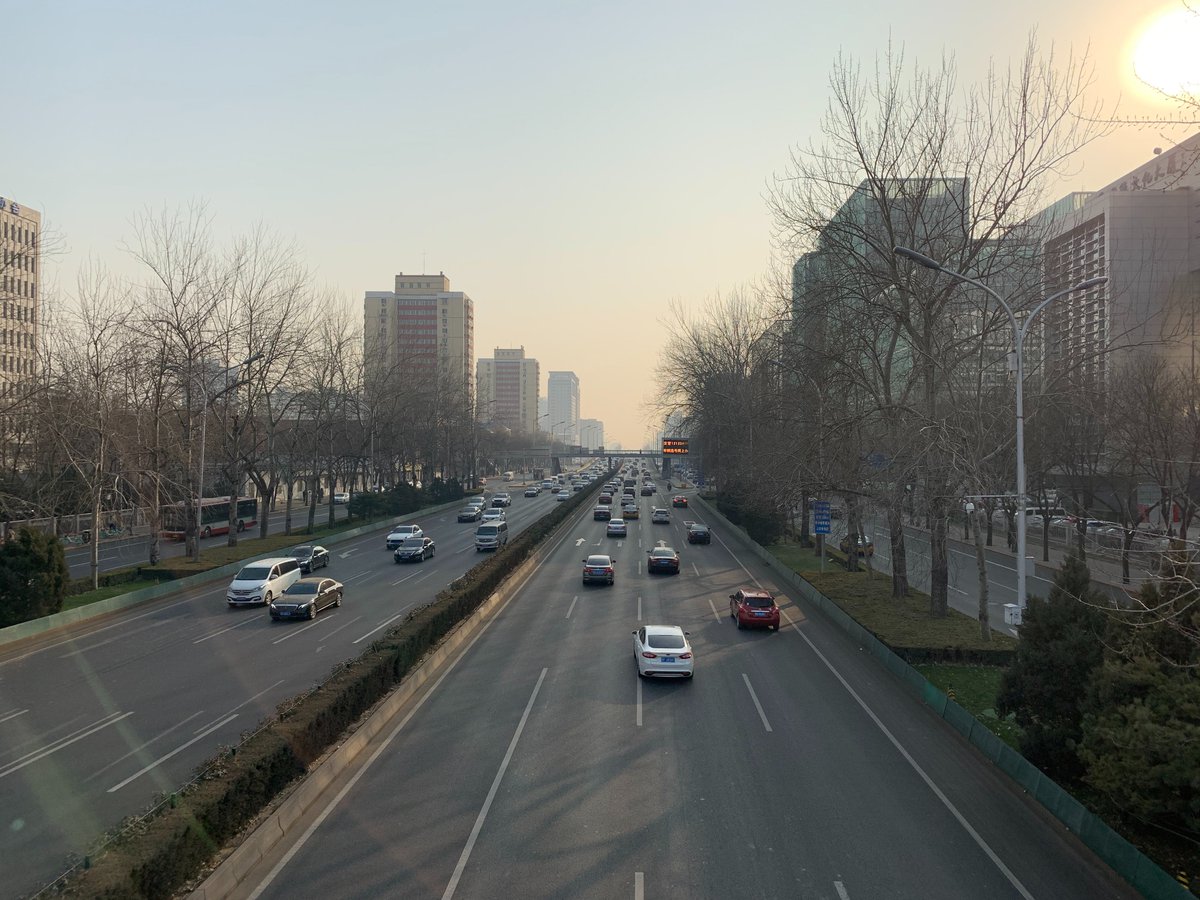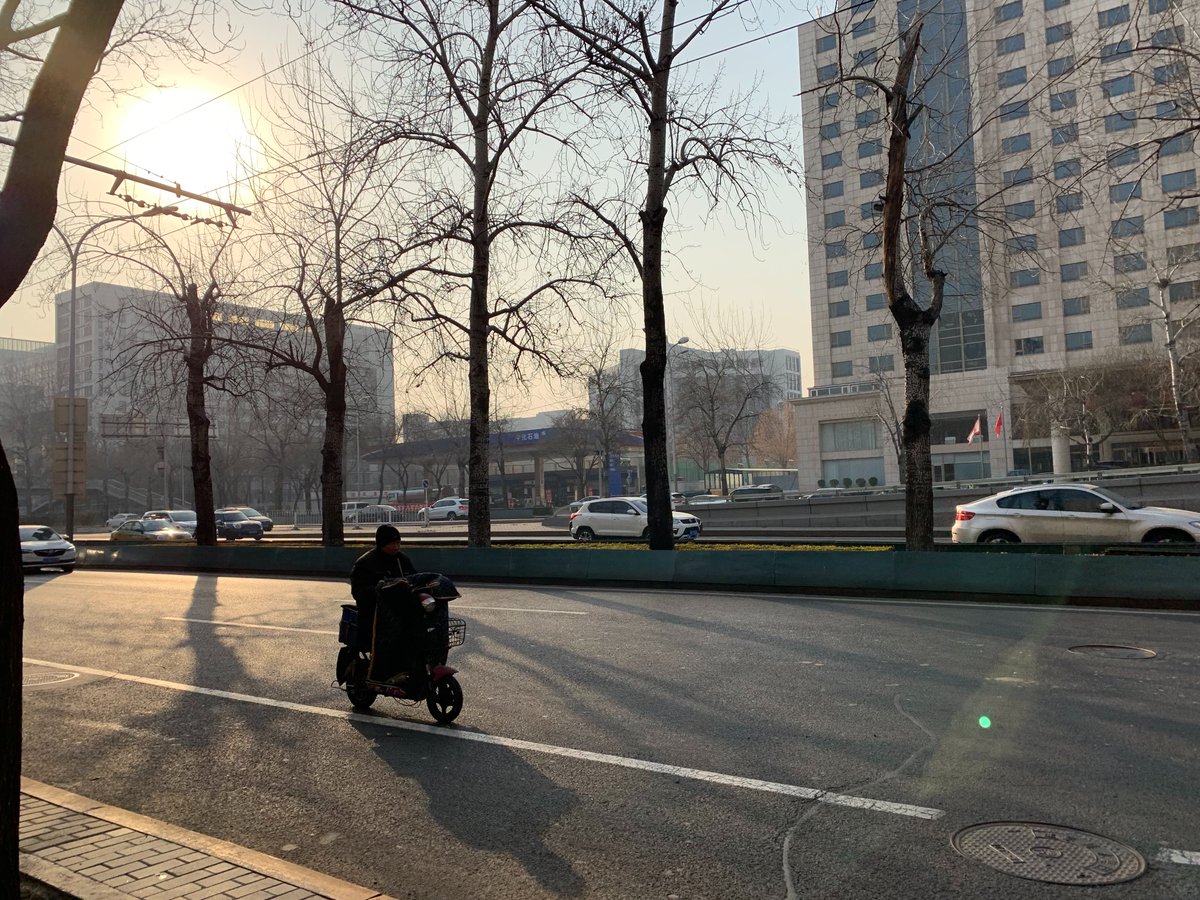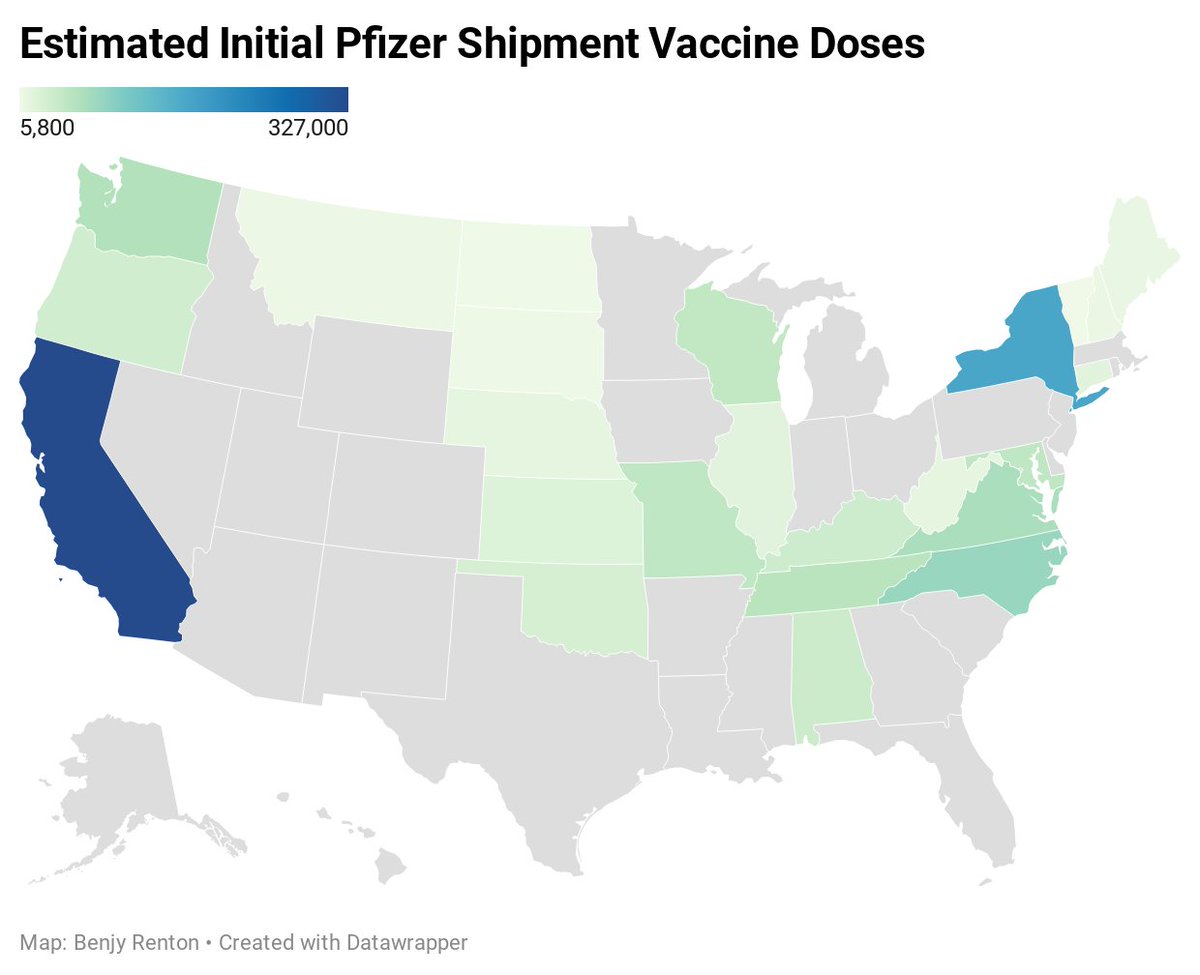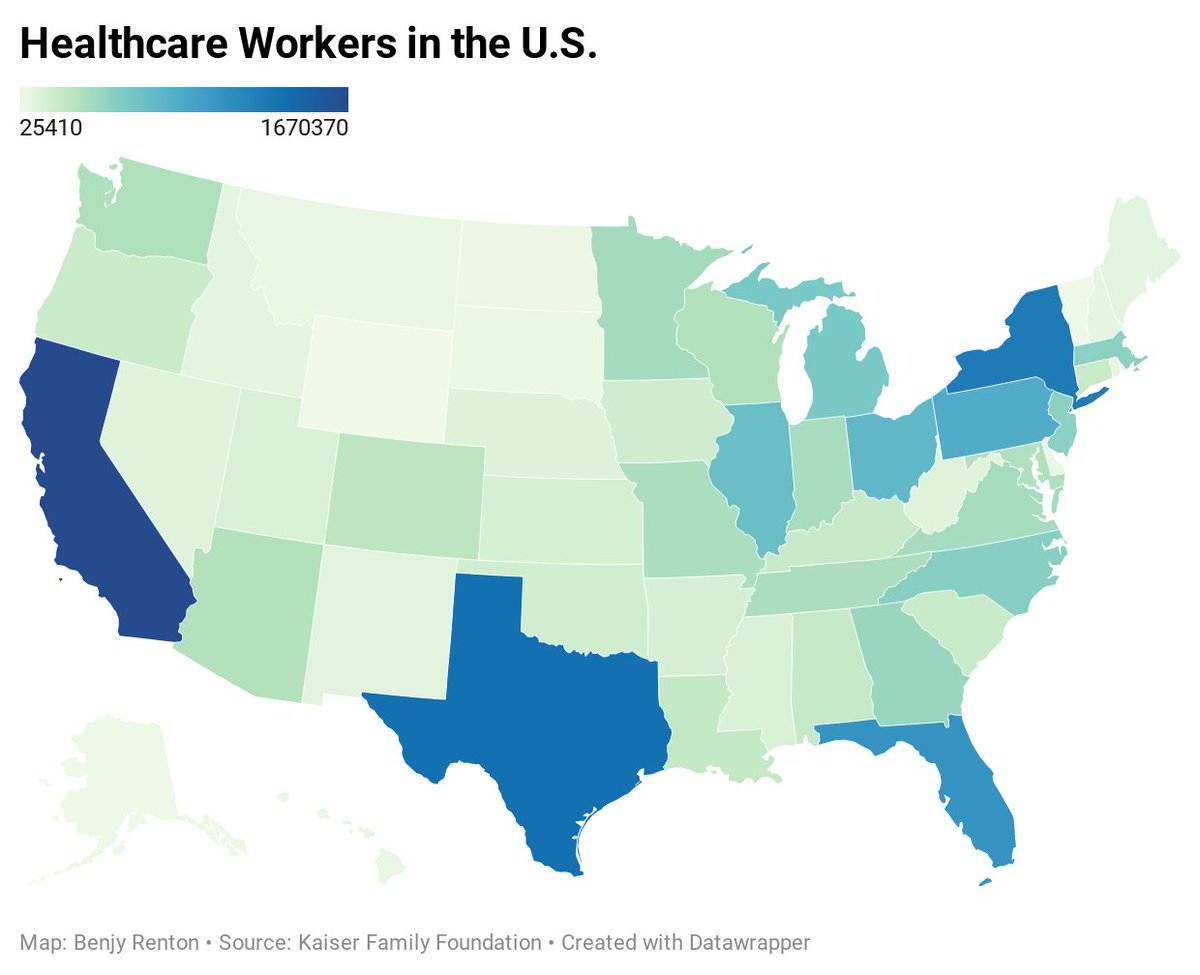
Tonight's #VaccinateAmerica dashboard update: 28 jurisdictions have vaccine dashboards with a total of 966,990 doses administered. This is an increase of 122,013 from yesterday. Keep in mind that states do back-report, especially with doses over Christmas.
public.tableau.com/views/COVID-19…
public.tableau.com/views/COVID-19…

New view on the dashboard: Roll over each state on the top 2 maps to see curves new doses administered and distributed by date. For example, here are graphs for South Dakota and Florida (this view is best for states that report daily/frequently).
public.tableau.com/views/COVID-19…

public.tableau.com/views/COVID-19…


The CDC also updated its national counts, which you can see on the "CDC Data" tab. According to the CDC, over 2.1 million doses have been administered nationwide. 

Dose allocations for the coming weeks are expected to be released by Operation Warp Speed in the coming days, and the dashboard will be updated accordingly.
The key number to watch is the national pace (doses/day). We currently do not have enough data for an accurate estimate.
The key number to watch is the national pace (doses/day). We currently do not have enough data for an accurate estimate.
• • •
Missing some Tweet in this thread? You can try to
force a refresh

